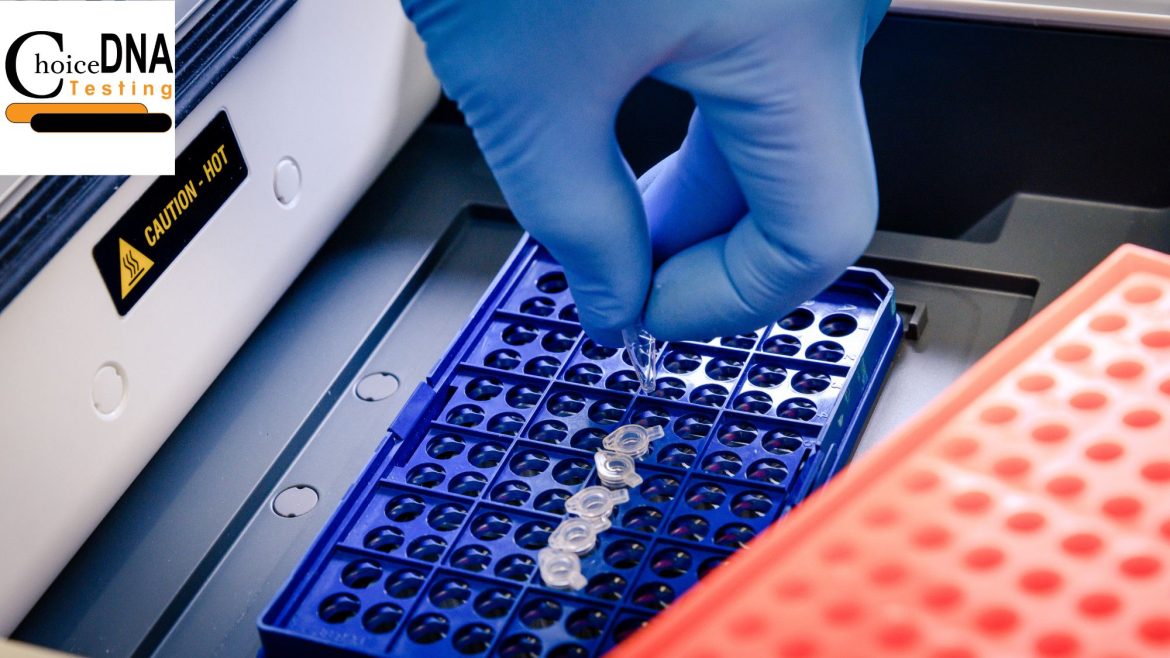Results of a DNA test may be obtained before your child’s birth. It is possible to reach fetal cells floating in the mother’s bloodstream using a non-invasive method. Because a needle is not used directly to take a cell sample from the placenta or the fetus, this method is safe. This non-invasive prenatal paternal testing procedure, also known as NIPP Testing, may be performed any time after a woman has completed her eighth week of pregnancy. Until then, a cheek swab may be used to collect DNA cell samples from the father.
How to Conduct a DNA Test
A DNA test typically consists of two steps. The DNA from the potential dads and the fetal cells in the mother’s bloodstream must first be collected by the lab. Second, the lab has to examine and evaluate the samples from the males and compare them to the child’s cell samples.
When testing is conducted after the baby is delivered, the inside of the cheeks are swabbed, and neither the mother’s blood nor that of the kid is required. The easiest and most painless method of obtaining DNA samples is by using cheek cells.
Methodology for Conducting DNA Test
Other methods of taking cell samples from the fetus immediately before delivery include amniocentesis and chorionic villus sampling, although both plans risk inducing a miscarriage. These are mostly used to check for Down syndrome and are hardly used for paternity testing.
After samples have been taken from each participant, the cells have been amplified to make working with the samples simpler. Typically, 16 to 20 STR genetic markers are employed for each individual. To get the genetic information from a cell, an STR analysis is performed. The tests are 100 percent trustworthy since they only use 16 of the 20 potential markers. They are almost 99 percent reliable when verifying the biological father and will never affirm the incorrect individual as the father.
Decision-Making Techniques
A mother’s initial choice is whether to undergo prenatal or NIPT testing. Prenatal tests often cost twice as much because they require more laboratory work. On the other hand, if the mother is unsure of how to handle her funds or whom she should choose in a relationship, then this can be a required investment.
Selecting the laboratory is another crucial choice a woman must make. Only certified laboratories should be used by mothers for NIPP testing since they are the safest.
Prenatal Paternity Test without Pain (NIPP Testing)
You may undergo a noninvasive prenatal paternity test starting at week seven of pregnancy and continuing through the first trimester. DNA from the mother is obtained during this test by a blood draw, and DNA from the father is obtained via a cheek swab. The samples are examined to compare the DNA of the newborn and a potential father. Results are typically available one week following the test. However, due to the limitations of current technology, this test is not accessible to women expecting twins.
Sample Chorionic Villus (CVS)
A tiny tissue sample from the placenta is obtained during this operation via the cervix or abdomen. The DNA of the probable father is then matched to the sample. The test typically takes place between weeks 11 and 14 of pregnancy. It can take weeks to see results.
Amniocentesis
Amniotic fluid is extracted using a needle during amniocentesis from the parent who is expecting it. The fluid sample is then compared to DNA samples from the prospective father and the expectant parent in a lab. Normally, this examination is performed between weeks 15 and 20 of pregnancy. Several weeks may pass before the findings are made public.
Are Paternity Tests Using DNA Safe?
Experts believe that noninvasive prenatal paternity tests are perfectly safe for both the pregnant mother and the unborn child and quite accurate. Paternity tests that are more intrusive and involve more risks include amniocentesis and chorionic villus sampling. They are not often advised by medical professionals unless they are required to identify a serious genetic condition. Transmission of infection: If you have toxoplasmosis, hepatitis B or C, or HIV/AIDS, it may go to your unborn child.
Prenatal paternity testing may assist you in obtaining critical answers while you still carry the baby. Think over your alternatives, then discuss with your doctor which one best achieves your objectives.
Summary
No matter why you need a paternity test when you are pregnant, it is crucial that you choose a well-regarded facility to do the test. Additionally, it’s vital that you only do paternity testing using non-invasive methods. Before NIPP testing was created, the main alternatives were amniocentesis or chorionic villus sampling, which came with risks. As a result, most physicians opted to wait until the baby was born before collecting the child’s DNA using a cheek swab.
The paternity test is often performed after the eighth week of pregnancy thanks to the NIPP, which now makes it safe to do one before the baby is delivered. The sophisticated technology used to identify the free-floating fetal cell in the mother’s bloodstream makes prenatal tests more expensive than postnatal ones.

